One of the great delights about gardening is growing something for the first time. Each season, we plant new varieties or a veggie we’ve never grown before to see what it’s like. In our test garden so far, we’ve planted and enjoyed asparagus (3 years ago), brown mustard seeds , quinoa (Growing Quinoa), garbanzo beans (stay tuned for a blog on that) and popping corn (see Growing Pop Corn).
Admittedly I’ve always avoided growing corn because the squirrels would always get to it in my neighbor’s gardens before they could. Didn’t seem worth it. Luckily, the squirrel community has not discovered the test garden yet. Knock wood… we made it through the season without a single disturbance and, as you’ll see below, things went rather well:
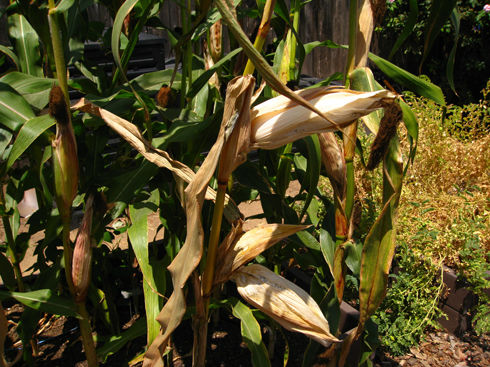
As the corn dries, the ears tip toward the ground.
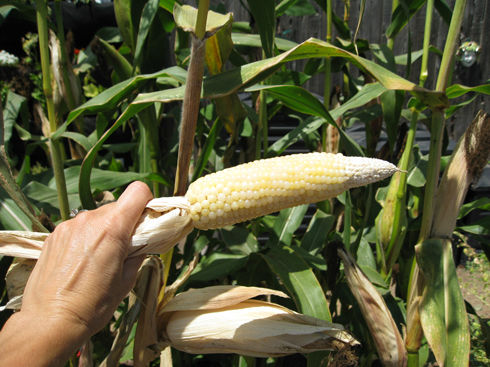
After peeling back the husks, squeals of delight accompany the discovery of rock hard corn kernels in neat rows. You know it’s dry when you can’t dent it with your fingernail. We left the corn on a drying rack for a few days to continue the process. Then we got this handy-dandy corn sheller for about $6 from Agri-Supply.com.
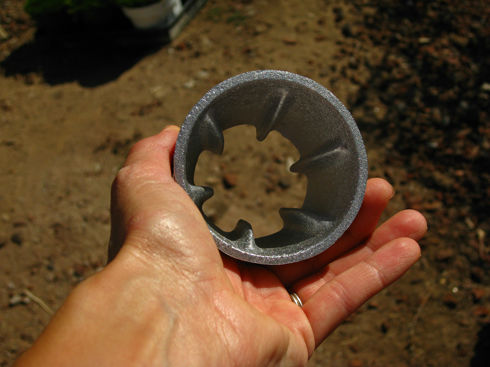
Basically you feed the narrow end of the corn into the fat end of the sheller and twist back and forth. Interesting discovery: wear gloves. It shreds your knuckles without them.
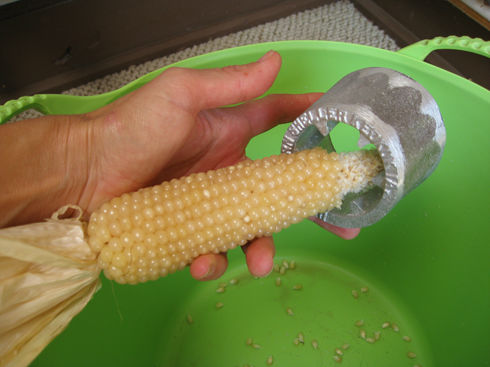
Gloves removed for photographic aesthetics
The urge to test the result was irresistible. We had a pan with oil over a hot burner in seconds. The sound of popping was different than store bought corn – somehow more gentle. Lifting the lid revealed that we had a lot of “widows” – unpopped kernels.

Problem suggests that the corn is in fact too dry, and the solution we found on many websites suggested to add a tablespoon of water per quart of corn and shake it over a few days. We’re in the process of experimenting with that for better results. In the meanwhile, here are the statistics of our yield:
15 plants yielded about 31 ears (there were more, but some of the were only partially grown, so we combined for a total)
31 ears yielded 54 oz or 3.4 pounds
3.4 pounds = 11.5 cups or 34 servings at 1/3 cup each.
So we estimate that being a 6 month supply for those who eat popcorn every 10 days. Not bad for 15 square feet!

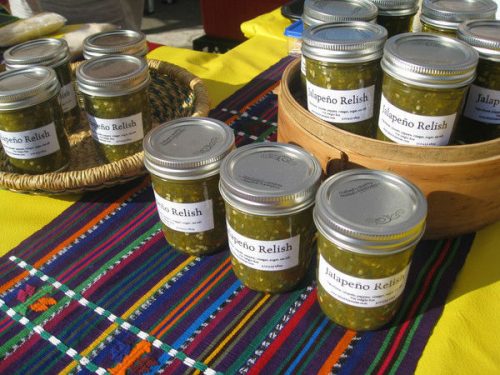

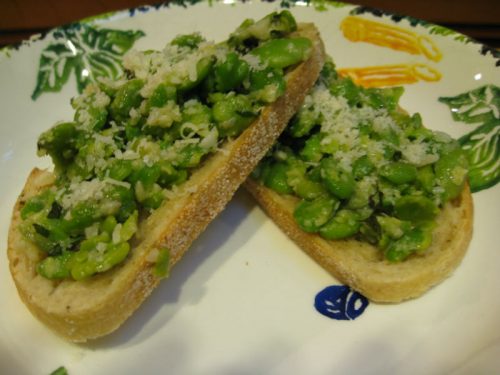
Pingback: Gardenerd: Organic Edible Gardening | Growing Grains in Small Spaces
Excellent post with some good info, think i’ll share this on my twitter if you don’t mind and maybe even blogroll it depending on the feedback, thanks for sharing.
Good news! I popped a successful batch of home grown popping corn last night, about 3 weeks after laying the corn out on baking sheets to dry out a bit more. That seemed to have done the trick (rather than adding water.) Every kernel popped and they were white, fluffy and delicious (with butter, salt and pepper – my preferred seasoning).
The variety I grew was called Japanese Hull-less. I did really well in Southern California. HOORAY!
We always put away at least a sample of the biomass to weigh when it has been dried out so we can determine an “air-dry biomass per 100 sq ft” yield. For the high-biomass stuff, anyway. It’s an objective way to compare which crops are capable of providing significant compost material. Like I said before, your popcorn stalks sound pretty formidable…
I’m glad to know the outcome of your soaking. I think we’ll try it one of these times, too, to see what happens. Post again if the drying works!
One last question – what variety did you use?
Ooh, where to start…
I’d love to grow popping corn again since it did really well, but we’ll have to see how much space we have when the time comes. Since it’s growing in the test garden, we may be on to other things by then.
I pulled out all but 3 of the corn stalks, which are still in place because the one Christmas Lima Bean plant that I’m growing at the base of them has taken over. I haven’t weighed the biomass (gee, should I? I was just going to chop it up and put it in the compost bin.) We already used a few stalks as a base for a new compost pile (good aeration practices). The rest will go in when we build the next pile.
You’re absolutely right about the ease of eating the un-popped kernels. They’re more chewy than the hard-as-a-rock store bought varieties. Here’s the funny thing: I kept adding water and testing the popping, and it kept getting worse. Websites say that the widows (un-popped kernels) are caused by “either too much or too little moisture” in the kernels. With great advice like that…
So I decided to stop adding water and instead lay the batch out on baking sheets to dry out more. Why? Because I had excitedly harvested and cleaned and stored my popping corn in an air-tight container, and after about a week I noticed that black mold was growing inside the container. Too much moisture! So over the last 2 weeks it’s been drying in the open air on baking sheets. The results are still TBD. I’ll pop another batch in a few days and will report my findings.
I feel like anyone willing to grow popcorn is a true revolutionary. It’s crazier than growing flour corn! Filed by many under “you can get that a lot cheaper at the store, can’t you?” Ah, but the satisfaction!
You ended up with a yield of 22+ lb/100 sq ft, which is pretty wicked. Are you going to do more next season?
Are you keeping dry biomass data? I’d love to hear how much of that you got. We’ve found in the past that popcorn gets lower biomass yields even than sweetcorn, but it sounds like yours did well…
Our own didn’t pop too well, either, but I found the unpopped ones were much easier to munch than commercial ones, saving my fillings. I look forward to seeing how the tablespoon of water does…